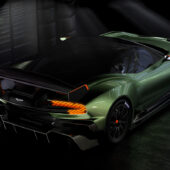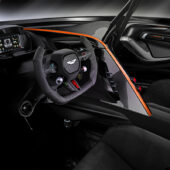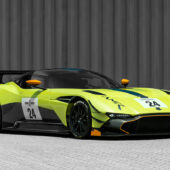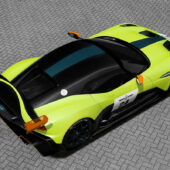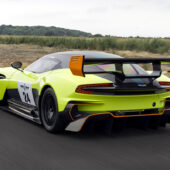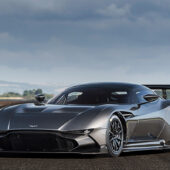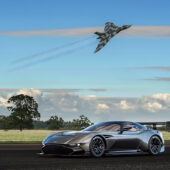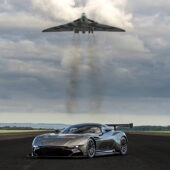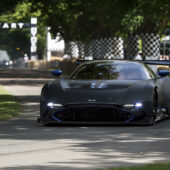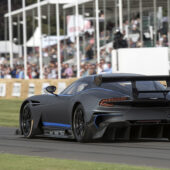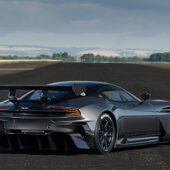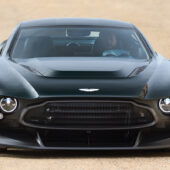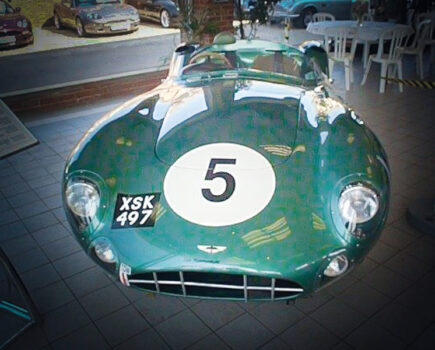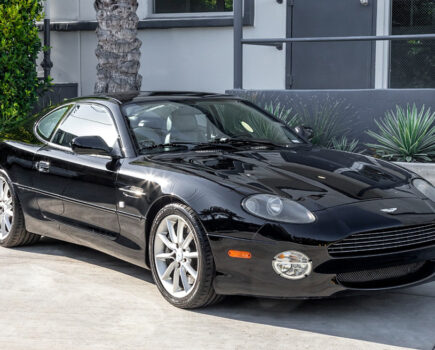The Aston Martin Vulcan was designed to take the fight back to Ferrari and McLaren, using the One-77 as a basis to create the ultimate halo car
Words: Jon Burgess
The second car in Aston Martin’s carbon hypercar (or Carbon Structure) range, the Aston Martin Vulcan effectively flicked Gaydon’s rivals the ‘V’: it was the first ‘V’-named Aston since the Vanquish (the second generation of which left production in 2018) and acted as the middle model above the One-77 (2009) but below the hardcore Valkyrie of 2021.
Intended for track use only, the Aston Martin Vulcan, intended to evoke visions of the advanced Avro Vulcan long-range bomber (and triple ‘V bomber’ series) was born out of meetings between Aston Martin’s Q Advanced Engineering and Advanced Operations and Motorsport; a gap existed for a circuit-specific model (and there were One-77 development prototypes going begging).
As brutally fast as the One-77 remained, it was still a road biased, and would lose trackside to the likes of the Ferrari FXX and McLaren GTR derivatives that were offering customers an ‘arrive and drive’ track experience, something that Aston had no answer to at the time. While insisting that customers inform them about their track day plans, Aston allowed Vulcan owners to keep their cars at home, unlike arrangements from Ferrari and McLaren, which kept FXXs and GTRs in the care of their makers.
Aston Martin Design and Aston Martin Racing rose to the challenge; using the One-77’s stiff carbon tub, subframes and suspension configuration as a basis, its traditional aluminium body panels were junked, and replaced with carbon fibre equivalents. There was also the small matter of the One-77’s 7.3-litre, Cosworth-developed V12: to underline its sporting credentials, Aston Martin Racing offered to further hone the Vantage GT3’s 6.0-litre unit in place of the incumbent unit instead, raising its output to 820bhp by increasing its cubic capacity by a litre.
The new motor remained exclusive to the Vulcan, its racing heritage no impediment. While uprated pushrod suspension kept the Vulcan and One-77 apart, the aerodynamics was what separated them completely. Wings and diffusers meant that the Aston Martin Vulcan could produce 1350kg of downforce at 190 mph: that was GT3 car levels of stiction, and all the more to get the most out of the six-speed Xtrac paddle shift and Michelin Sport Cup tyres. Aston would also supply a set of slicks with the car if needed, or detune it for owners to gain experience via a three stage power knob upping output in steps between 500 bhp, 675bhp and 820bhp. One Vulcan has managed to get to a grid: in 2022, an example was racing in the UK’s British Endurance Championship alongside GT3 machines.
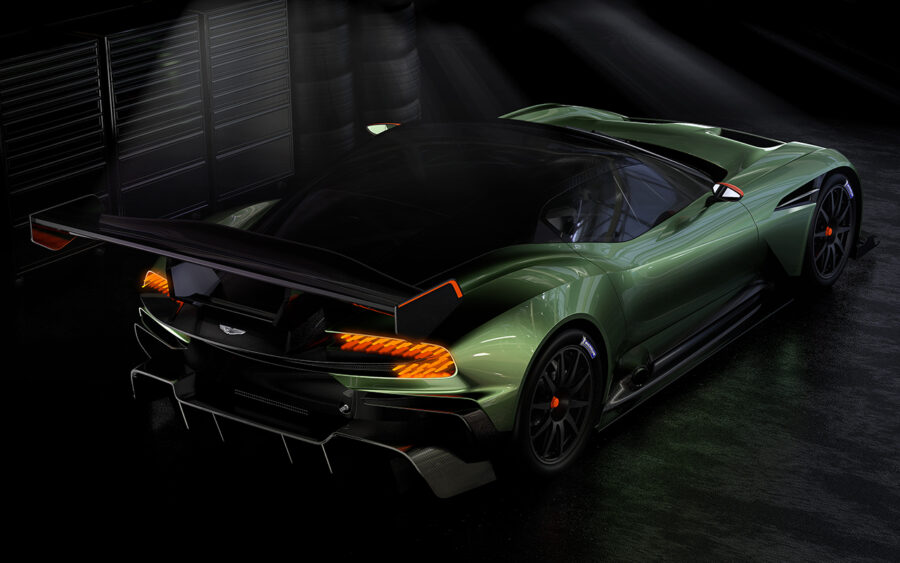
Racing engineers Ray Mallock Limited (RML), of Northamptonshire, converted one Vulcan to road specification in 2016, effectively imbuing the car with the same dual road and track functionality as the Valkyrie, previewed that year but not put into production until 2021.
The work took three months for an undisclosed sum; raised ride height, modified bumpers and DB11 mirrors allowed the car to wear number plates, alongside a remapped engine and altered spring and damper rates. The changes were billed as reversible, with no other Aston Martin Vulcan owners as yet contacting RML.
Aston Martin took the Vulcan packaged even further 2017 when its Q Advanced Operations department offered the AMR Pro package; revealed at the Goodwood Festival of Speed, the AMR Pro aerodynamic alterations were available for fitment to a new Vulcan or could be added to an existing car. The parts upped the aerodynamic ante even further; the rear wing got a second element, wheel arch cut outs and dive planes to create more downforce.
2020 saw the final evolution in the Vulcan saga; though it had begun as a road car, became a track star and in one case sidestepped back on to the Queen’s highway, its origin point, the One-77, had one more surprise up its sleeve.
Never to sit still, the Q Advanced Operations team rebodied a One-77; in a nod to another ‘V bomber’ the Handley Page Victor, the one-off car shared the name of the aircraft, harked back to the 1977 V8 Vantage in its nose treatment, and reused the Vulcan’s exhausts and side skirts. The work of Lagonda designer, Kaize “Ken” Zheng, it also boasted more power than the Aston Martin Vulcan: 836bhp, thanks to a reworked 7.3-litre V12. A six-speed Grazino manual replaced the automated manual unit in a ‘standard’ One-77.
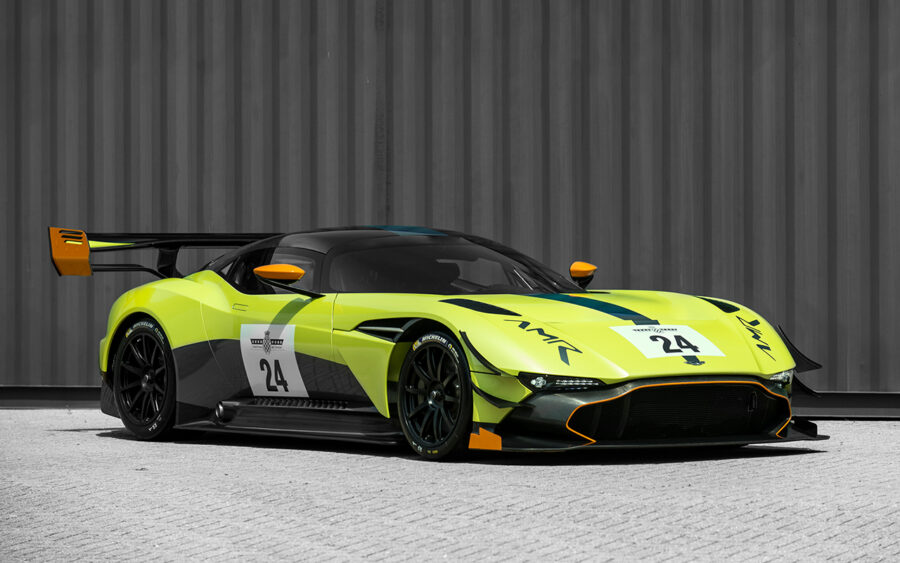
Aston Martin Vulcan timeline
2008–2009
One-77 road car previewed then revealed between Paris and Geneva Motor Shows. Fastest Aston to date, with six-speed automated Graziano manual gearbox fitted; carbon monocoque chassis with 220 mph top speed quoted, 77 units planned.
2012
One-77 production draws to a close – but not before seven final ‘Q Series’ cars are commissioned, offered with unique liveries and paint finishes.
2014
Departments within Aston Martin wonder how to make best use of retired One-77 prototype; a hardcore track car is proposed.
2015
Aston Martin Vulcan previewed in a teaser video at that year’s Geneva Motor Show, where it appeared in a 21 second promotion.
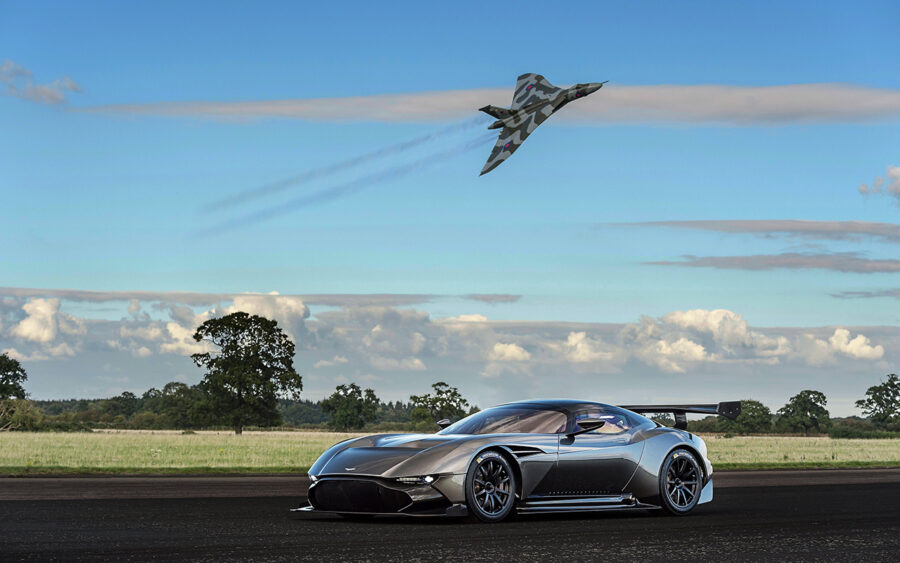
2016
24-car Vulcan series released for sale; priced at £1.8 million with an 820bhp, 7.0-litre V12, the car, like the DB4GT Continuation of 2018, was a track-day only machine until engineering firm, Ray Mallock Limited, accepted a commission to convert a Vulcan to roadgoing specification from a single, unnamed customer.
2017
Vulcan AMR Pro debuted at that year’s Goodwood Festival of Speed. Better aerodynamics, including a revised rear wing, created more downforce; mechanically unaltered apart from a shorter final drive, the alterations were made available by Aston Martin Q Division for ‘standard’ Vulcans to receive upgrades.
2020
Extreme variant (and technically third) ‘V car’ in carbon series shown: the Aston Martin Victor, created by the Q Advanced Operations Department as a one-off rebody of the One-77 by Lagonda stylist Kaize “Ken” Zheng, the Victor boasted a reworked 7.3-litre engine and a six-speed Graziano manual, putting it on equal footing with the Vulcan in power terms, but not aerodynamics.



